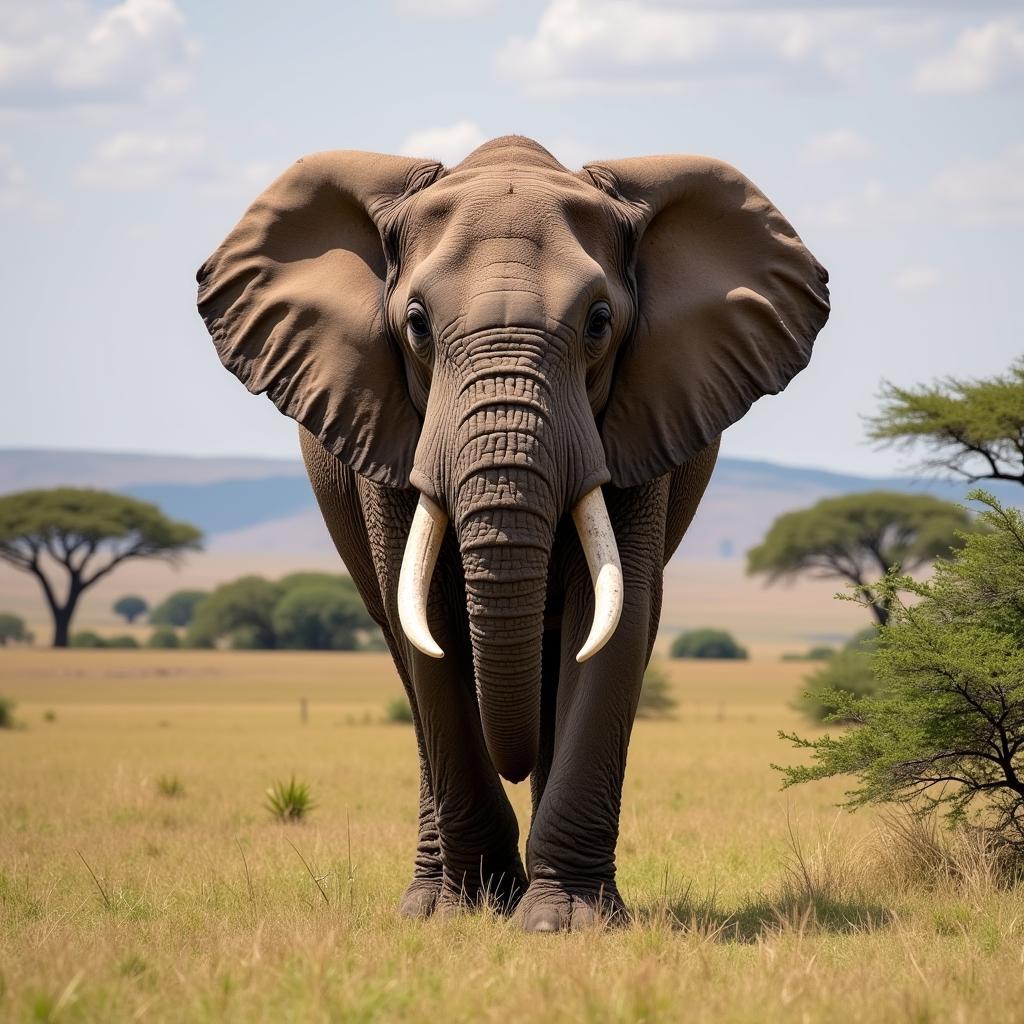African Elephant Scientific Name: Unveiling the Giants of Africa
The African Elephant Scientific Name reveals a fascinating tale of these majestic creatures. Within just a few words, we uncover clues to their evolutionary history and the distinct species that roam the African savanna and forests. Let’s delve deeper into the world of these gentle giants and uncover the secrets behind their scientific classification.
Decoding the African Elephant Scientific Name
The African elephant, as we commonly know it, is actually comprised of two distinct species: the African savanna elephant and the African forest elephant. These two species are differentiated by their scientific names, reflecting their unique characteristics and habitats. The African savanna elephant is scientifically known as Loxodonta africana while the African forest elephant is classified as Loxodonta cyclotis. The genus name, Loxodonta, refers to their distinctive lozenge-shaped teeth, a key feature that sets them apart.
Understanding the scientific name gives us a more precise way to discuss these animals and appreciate their subtle differences. It’s more than just a label; it’s a gateway to understanding their place in the intricate tapestry of life on Earth.
After learning about the African forest cat, you’ll be amazed by the diversity within the feline family. Check out this fascinating article: african forest cat.
Loxodonta africana: The Savanna Giant
Loxodonta africana, the African savanna elephant, is the larger of the two species, easily recognizable by its large size and expansive ears. These elephants roam the vast savannas of Africa, playing a vital role in shaping the landscape and maintaining the delicate balance of the ecosystem. They are herbivores, consuming large quantities of vegetation, and their movements influence the distribution of plant life across the savanna.
What is the Scientific Name for the African Savanna Elephant?
The scientific name for the African savanna elephant is Loxodonta africana.
 African Savanna Elephant (Loxodonta africana): A Majestic Giant of the Savanna
African Savanna Elephant (Loxodonta africana): A Majestic Giant of the Savanna
Loxodonta cyclotis: The Forest Dweller
The African forest elephant, Loxodonta cyclotis, is smaller than its savanna cousin and inhabits the dense rainforests of Central and West Africa. These elephants have adapted to their forested environment, with smaller, rounded ears and straighter tusks that allow them to navigate through the dense vegetation. They play a crucial role in seed dispersal and forest regeneration, contributing significantly to the biodiversity of their habitat.
Did you know there’s a fascinating story about an African and Asian elephant hybrid? Discover more: african and asian elephant hybrid motty.
What distinguishes Loxodonta cyclotis from Loxodonta africana?
Loxodonta cyclotis is smaller, has rounder ears, straighter tusks, and lives in dense forests, unlike Loxodonta africana.
 African Forest Elephant (Loxodonta cyclotis) in Rainforest Habitat
African Forest Elephant (Loxodonta cyclotis) in Rainforest Habitat
For a deeper dive into the world of African fruit trees, check out this comprehensive list: african fruit trees list.
The Importance of Conservation
Both the African savanna elephant (Loxodonta africana) and the African forest elephant (Loxodonta cyclotis) face significant threats from habitat loss, poaching, and human-wildlife conflict. Understanding their unique needs and the challenges they face is crucial for effective conservation efforts.
“Protecting these magnificent creatures requires a collaborative effort,” states Dr. Anika Moti, a renowned wildlife conservationist. “We must address the root causes of these threats and empower local communities to become active participants in their protection.”
 African Elephant Conservation Efforts in Action
African Elephant Conservation Efforts in Action
Discover fascinating facts about the iconic African baobab tree: african baobab tree facts.
Conclusion
The African elephant scientific name, whether Loxodonta africana or Loxodonta cyclotis, represents more than just a scientific classification. It embodies the rich biodiversity and the urgent need for conservation of these magnificent creatures. By understanding their distinct characteristics and the challenges they face, we can work towards ensuring their survival for generations to come. Let’s continue to learn about and protect these iconic symbols of Africa.
FAQ
- What is the difference between Loxodonta africana and Loxodonta cyclotis?
- Why are African elephants endangered?
- What are the main threats to African elephants?
- How can I support African elephant conservation?
- What is the role of African elephants in their ecosystems?
- What is the lifespan of an African elephant?
- How do African elephants communicate?
Want to witness the raw power of African buffalo? Check out these impressive videos: african buffalo videos.
Need support? Contact us 24/7: Phone: +255768904061, Email: [email protected], Address: Mbarali DC Mawindi, Kangaga, Tanzania.


